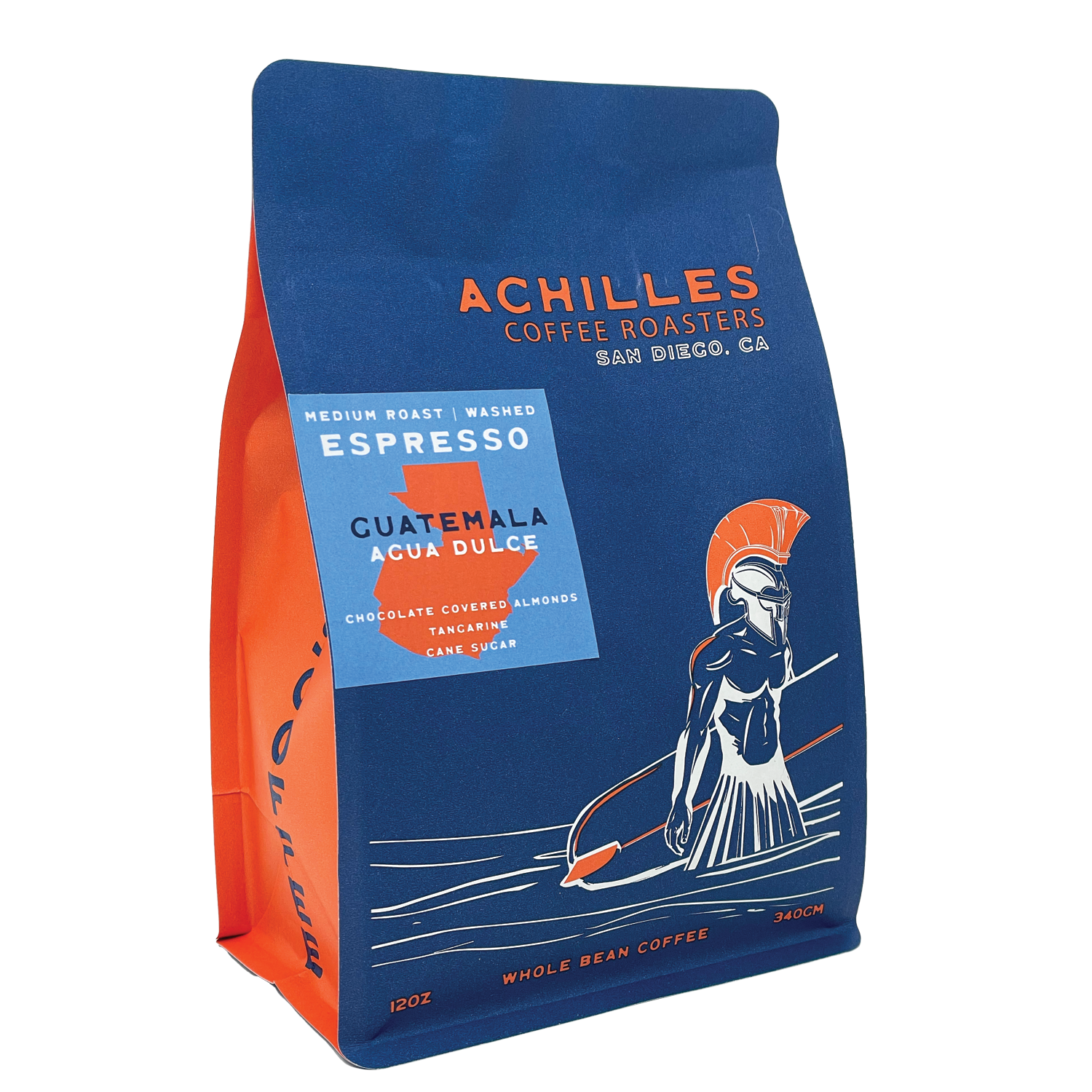Taste the Difference with Just-Roasted SOE Single Origin Espresso
Taste the Difference with Just-Roasted SOE Single Origin Espresso
Blog Article
Comprehending Coffee Beans: the Journey From Coffee to Blended Coffee Beans

The Beginnings of Coffee: A Worldwide Point Of View
While you could think about coffee as a modern staple, its beginnings map back centuries, linking with societies across the globe. The tale starts in Ethiopia, where tale claims a goat herder called Kaldi discovered the invigorating results of coffee beans after observing his goats romping vigorously after consuming them. This triggered interest, resulting in coffee's spread to Arab traders who treasured the brewed beverage. By the 15th century, it reached Persia, Egypt, and Turkey, where coffee shops became social centers for conversation and culture.
As trade courses broadened, coffee made its way to Europe in the 17th century, rapidly getting popularity. It changed from a magical beverage into a daily ritual, motivating events and intellectual exchanges. Each culture added its one-of-a-kind twist to coffee prep work, enriching its history. This worldwide trip highlights exactly how coffee attaches us, transcending borders and uniting diverse customs via a simple bean.
Cultivation and Harvesting of Coffee Beans
As coffee's journey advanced, the focus changed to the growing and harvesting of details bean ranges, especially those used for coffee. You'll find that coffee beans typically originate from Arabica or Robusta plants, each offering distinctive tastes. The ideal expanding conditions include high elevations and rich, well-drained dirt, which enhance the beans' top quality.
Throughout the harvest, choosing techniques differ. Timing is essential; you desire to collect when the cherries reach peak ripeness for optimum flavor.
As soon as harvested, the beans are planned for handling, which is essential in identifying their final preference. Understanding the cultivation and collecting processes gives you insight right into what goes into your favorite coffee, improving your recognition for each cup.
Handling Techniques: From Cherry to Bean
Since you have actually discovered gathering espresso beans, allow's discover exactly how those cherries transform into the coffee beans you love. You'll see how various harvesting methods effect flavor, complied with by the crucial actions of fermentation and drying out. We'll break down the milling and grading process that identifies your coffee's quality.
Harvesting Techniques Explained
When it involves coffee, understanding harvesting techniques is vital, given that they directly affect the taste and top quality of the beans you delight in. There are two primary approaches: discerning selecting and strip selecting. Selective picking involves hand-picking only ripe cherries, guaranteeing you get the most effective high quality beans. This method often results in a richer flavor profile, though it's even more labor-intensive. On the various other hand, strip picking means harvesting all cherries simultaneously, no matter ripeness. While it's quicker and less costly, this can cause a mix of flavors, affecting the end product. Eventually, the selection of harvesting technique can considerably affect your coffee experience, so it's worth understanding how those beans made it to your cup.
Fermentation and Drying Out
After gathering, the next actions in handling coffee beans play a considerable function in shaping their taste. You'll find that fermentation is important, as it aids damage down the mucilage surrounding the beans, boosting their taste profile. Depending on the technique, this process can last from a few hours to several days, with differing outcomes based on temperature and moisture.
Once fermentation is complete, drying out complies with, which is equally important. You can pick from mechanical or sun-drying drying techniques. Sun-drying permits the beans to absorb flavors from the atmosphere, while mechanical drying out warranties constant dampness degrees no matter climate. Appropriate drying is important to protect against mold and preserve the beans' quality, eventually influencing your mug of coffee.
Milling and Grading Refine
As fermentation and drying out established the stage for flavor development, the milling and grading process guarantees that just the very best coffee beans make it to your mug. This phase involves getting rid of the outer layers of the coffee cherry, including the parchment and husk. After milling, the beans are arranged by size and weight, making sure an uniform quality. You'll locate that grading aids determine defects and categorize beans, which affects taste and fragrance. High-grade beans obtain a higher grade, leading to a richer coffee experience. When rated, the beans await product packaging and shipping, protecting their one-of-a-kind attributes. This thorough procedure is important for providing the extraordinary taste you appreciate in every sip of your preferred mixture.
Toasting Methods: Unlocking Taste Prospective
When you roast coffee beans, the approach you select can significantly impact the flavor profile. Understanding the connection between time, temperature level, and toasting methods is key to exposing the potential of your brew. Let's discover just how these components come with each other to create the best mug.
Roasting Approaches Clarified
While you might assume that all coffee roasting methods generate the same results, the reality is that each technique discloses unique taste capacities in the beans. You can select in between approaches like drum roasting, air roasting, or perhaps typical frying pan roasting. Drum roasting utilizes a revolving drum to evenly distribute warm, enhancing caramelization and generating a balanced taste. Air roasting, on the various other hand, flows hot air around the beans, promoting a lighter roast with noticable level of acidity. Frying pan roasting permits for hands-on control however needs constant interest to stay clear of burning. Each method has its subtleties, so trying out with various methods can help you discover the ideal roast that lines up with your preference choices. Take pleasure in the trip of discovering your ideal cup!

Influence On Flavor Account
Various roasting techniques not only affect the process yet likewise greatly impact the flavor profile of the coffee beans. When you choose a light roast, you'll experience intense acidity and flower notes, showcasing the bean's beginning. On the other hand, a tool roast balances level of acidity with sweetness, frequently disclosing chocolatey undertones. Dark roasts, on the various other hand, bring out vibrant, smoky tastes, often masking the bean's one-of-a-kind attributes. Each technique discloses various oils and compounds, resulting in a large range of tastes. By experimenting with different roasting designs, you can find which accounts reverberate with your taste. Recognizing these nuances assists you appreciate the creativity behind your cup of coffee, enhancing your total experience with every sip.
Time and Temperature Elements
To launch the complete flavor possibility of coffee beans, both time and temperature level during the roasting process play considerable duties. When toasting, you'll find that higher temperature levels can promptly create tastes, but if you rush it, you might end up with burned notes. Conversely, lower temperatures permit an extra gradual flavor development, showcasing the beans' distinct attributes.

Timing is equally as vital; expanding the roast also long can bring about a loss of level of acidity and brightness, while too brief a roast could leave the beans underdeveloped. Locating that wonderful area requires practice and experimentation. By adjusting these factors, you can disclose the rich, complex flavors concealed within each bean, producing a really impressive coffee experience.
The Art of Blending: Crafting One-of-a-kind Coffee Profiles

Start by picking a base coffee that provides a solid structure. Choose complementary beans to boost particular flavor notes. A bright Ethiopian bean can bring fruitiness, while a rich Brazilian coffee includes body. Testing is crucial-- do not hesitate to change proportions up until you locate your perfect profile.
As you blend, maintain in mind that each mix narrates. You're not simply making coffee; you're developing an experience. Take your time, preference often, and take pleasure in the trip of uncovering your signature blend - Single Origin Espresso.
Brewing Methods: How Preparation Affects Flavor
Mixing coffee opens up a domain name of flavor possibilities, yet exactly how you brew that mix can substantially affect your final mug. On the various other hand, a pour-over highlights the coffee's quality and illumination, best for showcasing delicate notes.
Espresso, with its high pressure, generates a focused shot that highlights sweetness and crema. If you prefer a lighter mixture, take into consideration a cool brew method; it produces a smooth, much less acidic preference.
Eventually, experimentation is vital. Adjusting variables like water temperature, grind dimension, and brew time can transform your coffee's account. So, embrace the art of brewing to find the flavors concealed in your coffee blends. The right method can raise your experience to brand-new elevations.
The Future of Coffee: Sustainability and Development
As the coffee sector develops, sustainability and innovation are coming to be necessary for dealing with environmental difficulties and conference consumer demands. You'll see that even more coffee companies are embracing green practices, from sourcing beans fairly to applying sustainable farming techniques. These shifts not just aid the planet however additionally enhance the high quality of the coffee you appreciate.
You could see advancements like naturally degradable product packaging and water-saving brewing techniques that minimize waste. Advanced innovation, such as blockchain, is also becoming prominent, making certain transparency in the supply chain, which enables you to map your coffee back to its beginnings.
On top of that, buying neighborhood communities and sustaining farmers through reasonable profession efforts promotes an extra sustainable coffee ecological community. As you drink your next cup, bear in mind that your choices can add to a brighter future for coffee. By opting for sustainable brands, you're not simply delighting in a beverage; you're making a positive influence on the globe.
Regularly Asked Inquiries
What Is the Difference In Between Arabica and Robusta Beans?
Arabica beans are smoother, sweeter, and have a higher acidity, while robusta beans are stronger, extra bitter, and have more caffeine. You'll discover these distinctions in taste and scent when brewing your coffee.
Just How Does Elevation Affect Coffee Bean Taste?
Altitude impacts coffee bean flavor considerably. Higher altitudes create beans with brighter acidity and complex tastes, while lower elevations usually generate beans that are much heavier and much less nuanced. You'll observe these differences in your mug!
What Are the Health And Wellness Advantages of Drinking Coffee?
Consuming coffee can increase your power, enhance psychological focus, and even enhance physical efficiency. It's rich in anti-oxidants, may lower the threat of certain conditions, and can promote a much healthier metabolic process when eaten in moderation.
Can Coffee Beans Be Reused for Developing?
Yes, you can reuse coffee beans for developing, however the taste could be weaker. If you take pleasure in experimenting, attempt recycling them in different ways, like cold brews or contributing to healthy smoothies for an added kick.
How Should I Store Coffee Beans for Freshness?
To keep your coffee beans fresh, store them in an airtight container in an awesome, dark location. Prevent revealing them to heat, moisture, or light, as these variables can quickly deteriorate their taste and fragrance.
Understanding Coffee Beans: the Trip From Coffee to Blended Coffee Beans.
Currently that you have actually Single Origin Espresso learned about gathering coffee beans, allow's discover exactly how those cherries change right into the coffee beans you like.When you roast coffee beans, the approach you pick can considerably influence the taste account - Single Origin Espresso.While you might believe that all coffee toasting methods produce the exact same results, the fact is that each technique reveals unique flavor potentials in the beans.Different roasting approaches not only influence the process however additionally substantially influence the taste account of the coffee beans
Report this page